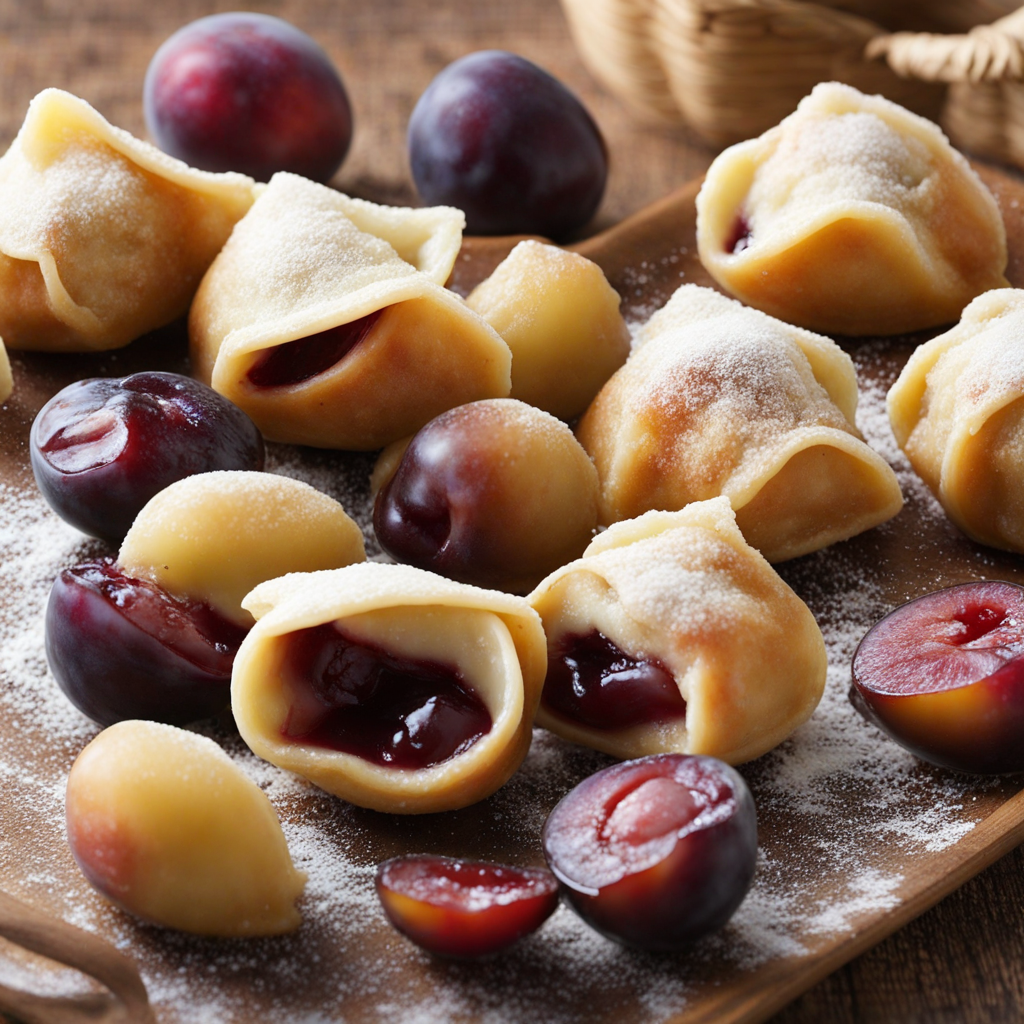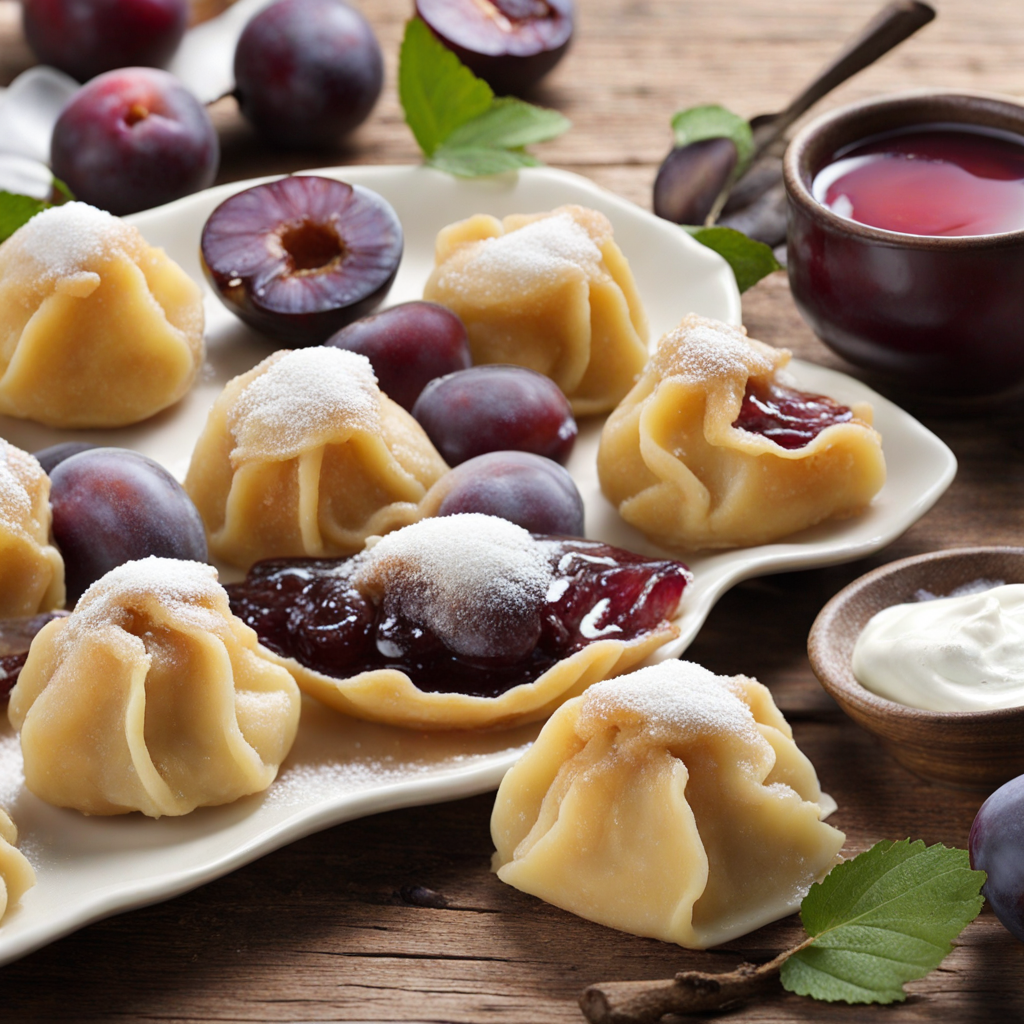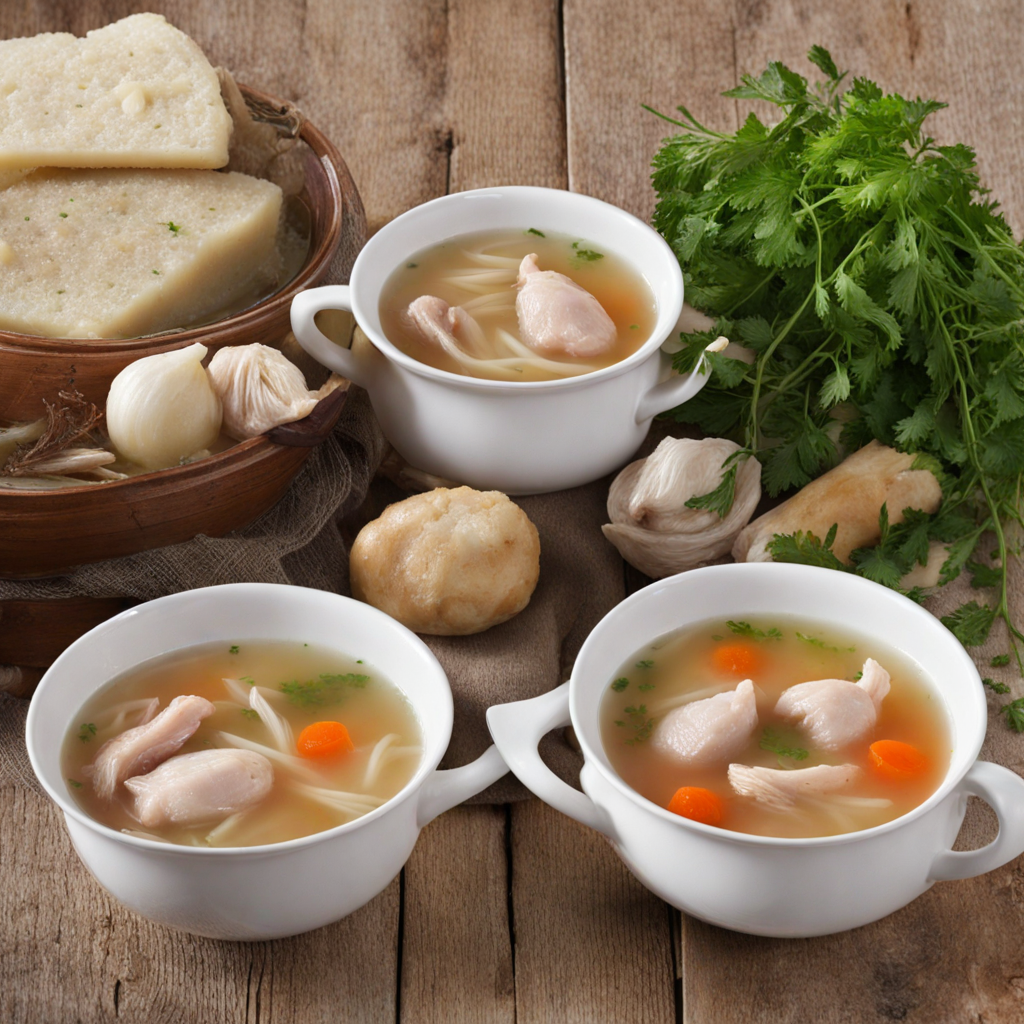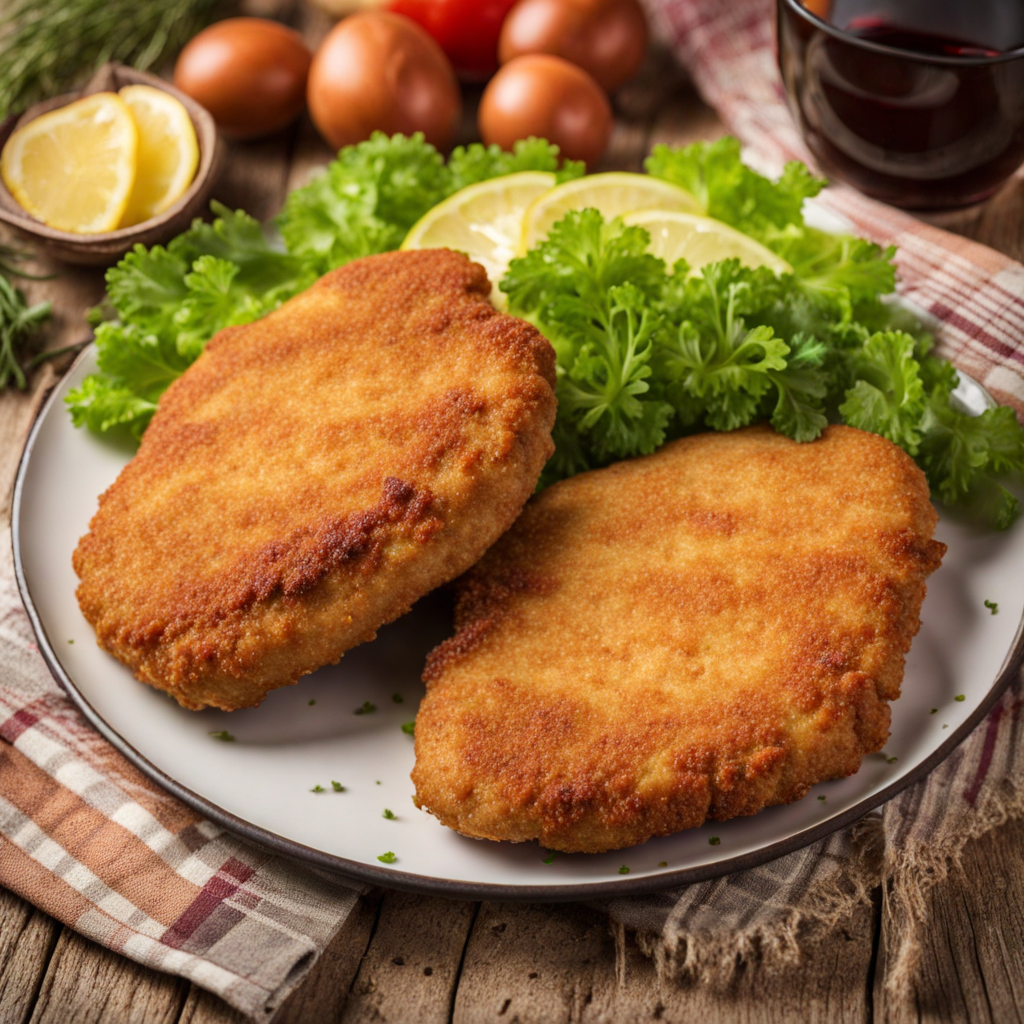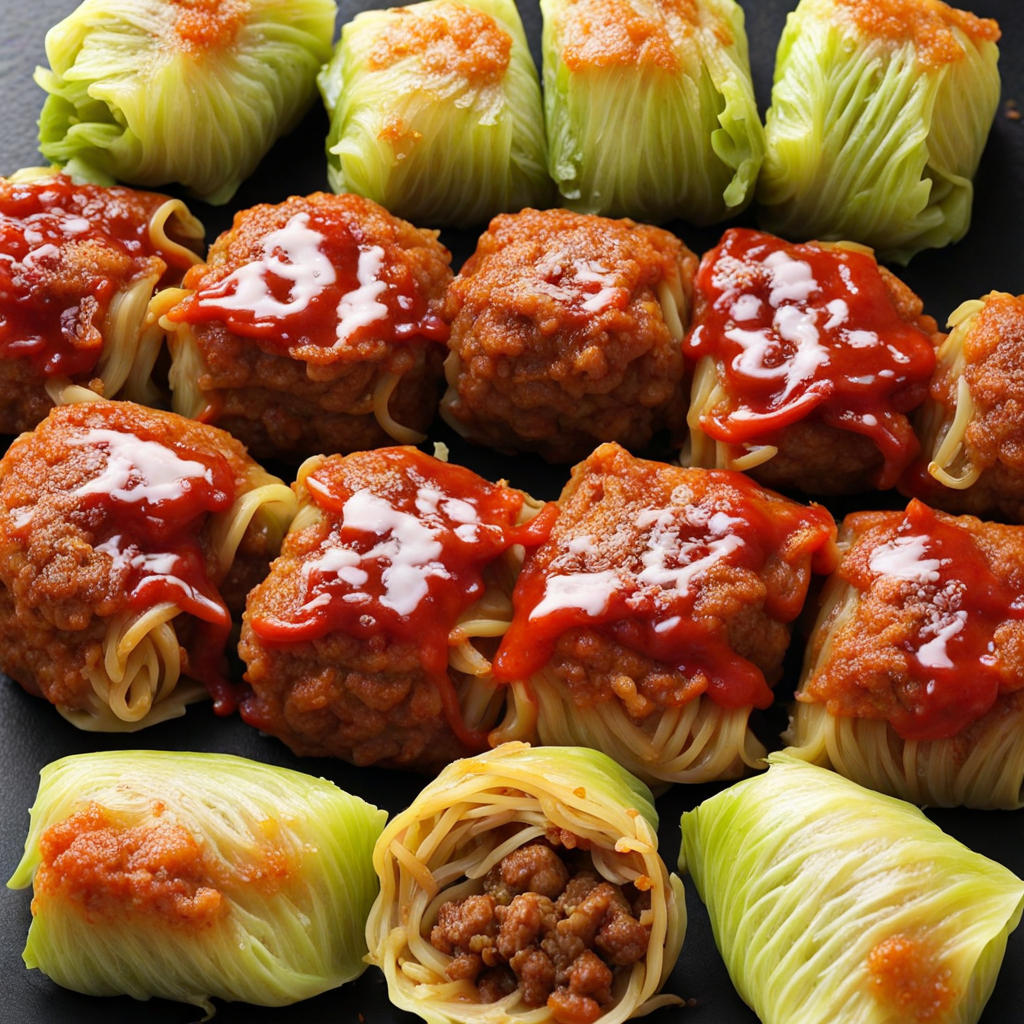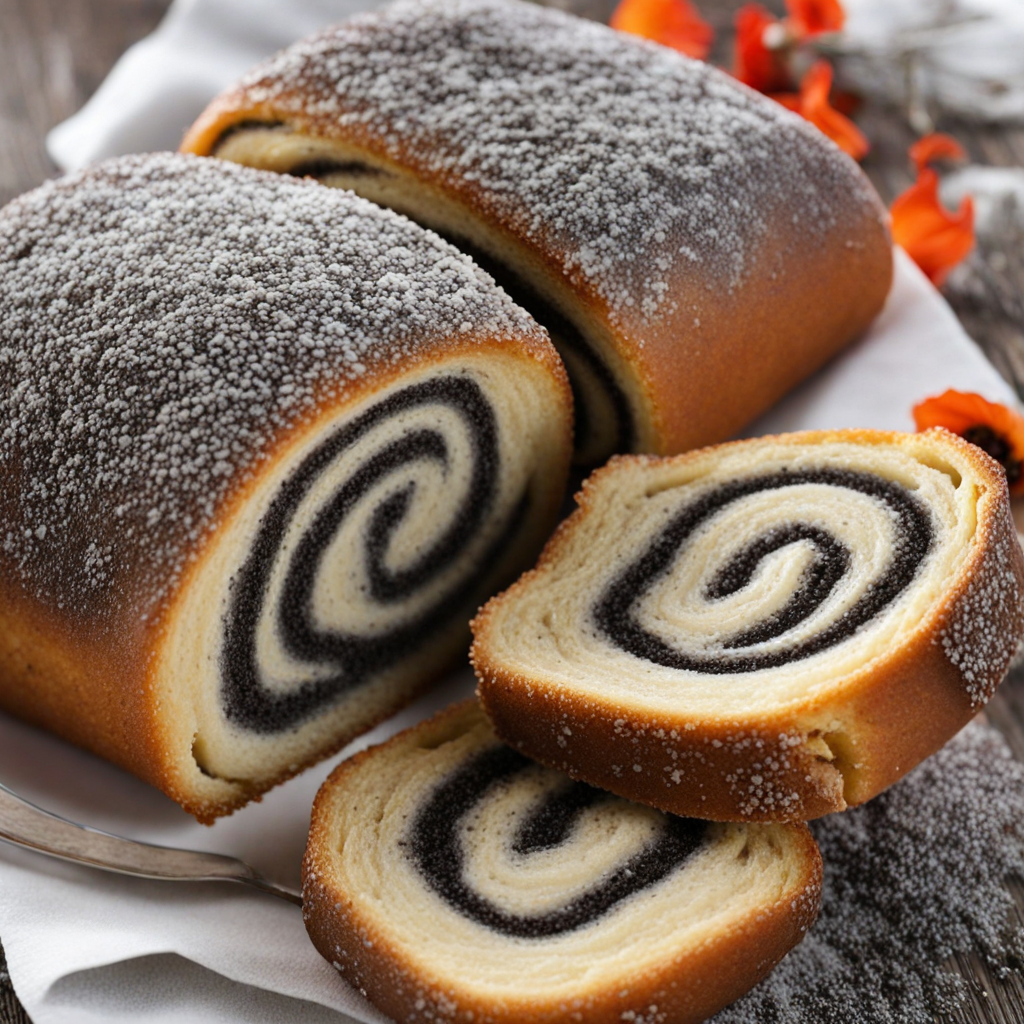Knedle
Knedle are delightful Polish dumplings that embody the essence of comfort food. Traditionally made from a soft potato dough, these dumplings are often filled with sweet or savory ingredients, making them a versatile dish suitable for any meal. The most popular version features a luscious filling of ripe plums, which lends a sweet and tart flavor that perfectly balances the mildness of the potato. The dough is skillfully rolled out, wrapped around the filling, and then formed into small, pillowy shapes that cook up beautifully when boiled. Once cooked, knedle are typically tossed in melted butter and sprinkled with sugar or breadcrumbs, creating a sumptuous finish. The texture is wonderfully soft and tender, with the filling bursting forth with every bite. The plums, when cooked, become juicy and sweet, complementing the rich, buttery coating that enhances the overall experience. For those seeking a savory twist, some variations include fillings like cheese or mushrooms, offering a delightful contrast to the sweet versions. Serving knedle can be an art in itself, as they are often presented with a dollop of sour cream or a dusting of powdered sugar, depending on the filling. This dish not only showcases the culinary tradition of Poland but also invites diners to experience the comforting flavors of home-cooked meals. Whether enjoyed as a sweet dessert or a savory main course, knedle are a true testament to the heartwarming and satisfying nature of Polish cuisine.
How It Became This Dish
Knedle: A Journey through Polish Culinary Heritage Knedle, a delightful dumpling hailing from the heart of Poland, tells a story rich in flavors, culture, and tradition. These soft, pillowy creations have evolved over centuries, becoming not just a beloved dish but also a symbol of Polish identity and heritage. Origins and Etymology The roots of knedle can be traced back to the broader family of dumplings found across Central and Eastern Europe, which share similarities with variations found in German, Czech, and Slovak cuisines. The name "knedle" itself is derived from the Czech word "knedlík," which means dumpling. The culinary tradition of dumpling-making likely spread with the movement of peoples and cultures in the region, influenced by agricultural practices, local ingredients, and the availability of resources. Historically, dumplings have been a staple in many cultures due to their simplicity and versatility. In Poland, the use of potatoes as a primary ingredient in knedle coincided with the potato’s introduction to Europe in the late 16th century. This starchy tuber quickly became a fundamental part of the Polish diet, especially in rural areas, where it was easy to grow and store. Ingredients and Preparation Knedle are typically made from a dough that consists of potatoes, flour, and eggs, creating a soft and pliable texture. The filling can vary widely; traditional fillings may include sweet fruits like plums, strawberries, or blueberries, or savory options like meat, mushrooms, or cheese. The fruit-filled knedle are often served with a sprinkle of sugar, butter, or a dollop of sour cream, while the savory versions might be accompanied by a rich sauce. The preparation of knedle is an art form in itself. The dough is rolled out, filled, and carefully shaped into small balls before being boiled until they float to the surface, indicating they are ready. This simple yet meticulous process is often a communal activity, with families gathering to make knedle for special occasions or festive meals. Cultural Significance Knedle hold a significant place in Polish culture, often associated with comfort and home-cooked meals. They are a staple at family gatherings, weddings, and festive celebrations, embodying the spirit of togetherness and familial love. In many Polish families, the making of knedle is a rite of passage, where younger generations learn the traditional methods from their elders, ensuring that the culinary craft is passed down through the ages. In the context of Polish holidays, knedle take on special meanings. For instance, during the harvest season, they might be filled with seasonal fruits, celebrating the bounty of nature. In the winter months, savory knedle filled with meats or mushrooms are popular, providing warmth and sustenance during the colder days. Knedle have also made their way into Polish literature and folklore, often mentioned in nostalgic tales of childhood and family gatherings. They serve as a reminder of the importance of food in creating shared memories and experiences. Evolution Over Time As Poland underwent political and social changes, so too did its culinary landscape. The 19th and early 20th centuries saw significant shifts in food preparation and consumption, influenced by industrialization and urbanization. Knedle, like many traditional dishes, adapted to these changes. The availability of new ingredients, such as sugar and exotic fruits, allowed for creative variations that reflected the evolving tastes of Polish society. During the interwar period and after World War II, Poland experienced food shortages and economic challenges, which affected traditional cooking methods. Despite these hardships, knedle remained a symbol of resilience, often being made with whatever ingredients were available, showcasing the ingenuity of Polish cooks. Variations emerged, including the use of buckwheat or rye flour, adapting to the scarcity of wheat. In contemporary Poland, knedle have seen a resurgence, with both traditional recipes and modern interpretations gaining popularity. Chefs in restaurants and home cooks alike experiment with fillings and presentations, sometimes incorporating international flavors or fusion elements. The rise of food tourism has further elevated knedle, with visitors seeking out authentic experiences and traditional recipes that connect them to Polish culture. Knedle in the Modern Era Today, knedle are not just a relic of the past but a vibrant part of Poland's culinary scene. They are found in various forms, from street food stalls to high-end restaurants, each presenting their unique take on this classic dish. Food festivals celebrating Polish cuisine often feature knedle, showcasing the variety of fillings and styles that exist across different regions of Poland. Moreover, the global appreciation for Polish cuisine has grown, with knedle being embraced by the diaspora and food enthusiasts worldwide. Cookbooks and online platforms dedicated to Polish cooking highlight knedle, encouraging a new generation to explore and recreate this traditional dish in their own kitchens. In recent years, there has been a growing trend towards sustainability and local sourcing in cooking. This movement has breathed new life into knedle, as many cooks return to using seasonal, locally-sourced ingredients to create fillings that reflect the flavors of the region. This not only honors the traditional methods of preparation but also aligns with contemporary values of environmental consciousness and health. Conclusion Knedle are more than just dumplings; they are a celebration of Polish heritage, identity, and culinary artistry. From their humble origins to their modern interpretations, knedle continue to evoke warmth and connection, serving as a delicious reminder of the power of food to bring people together. As they adapt to the changing times, knedle remain a cherished symbol of Poland's rich culinary tapestry, promising to delight future generations with their comforting embrace and flavorful fillings. Whether enjoyed at home, in a bustling market, or at a festive celebration, knedle will forever be a testament to the enduring spirit of Polish cuisine.
You may like
Discover local flavors from Poland


